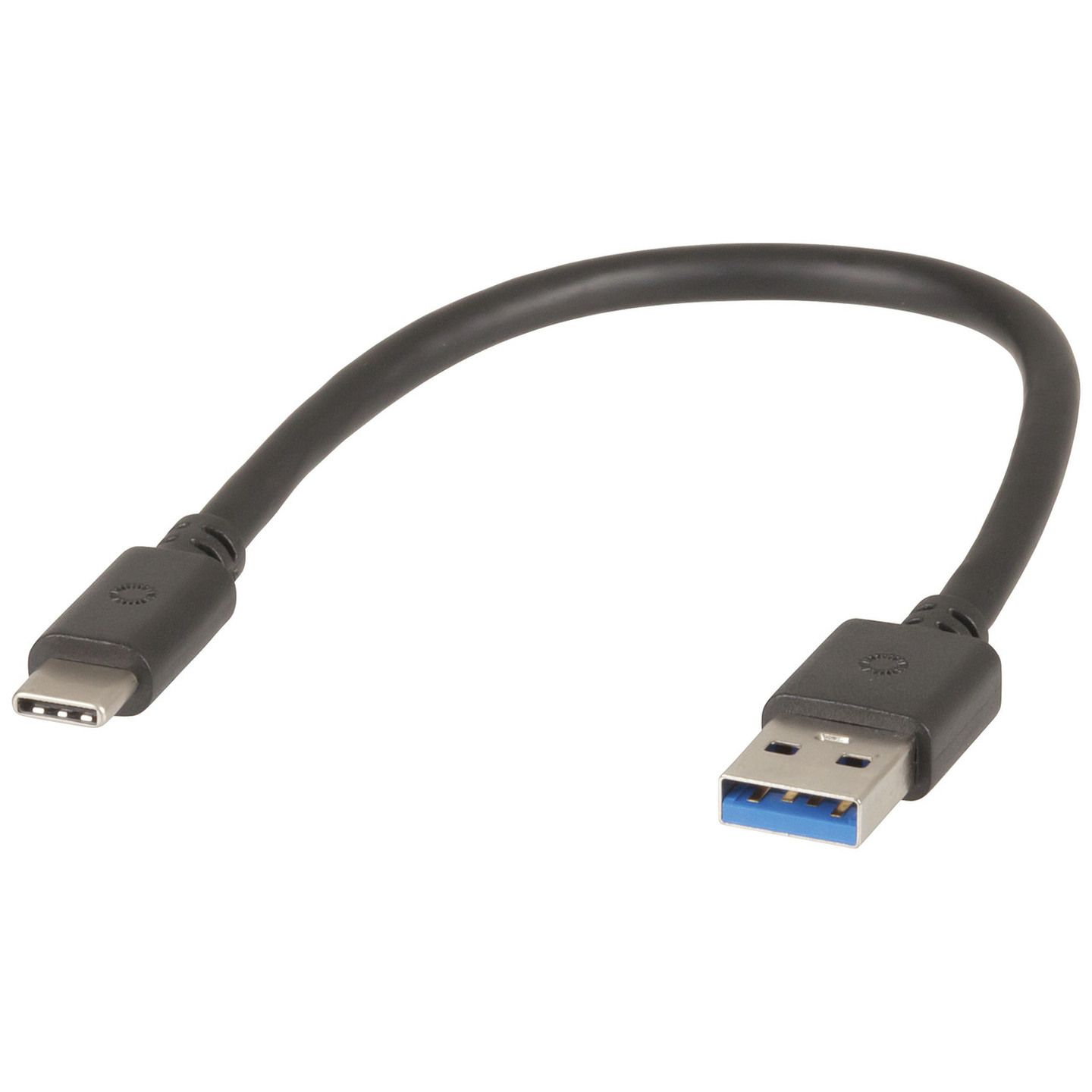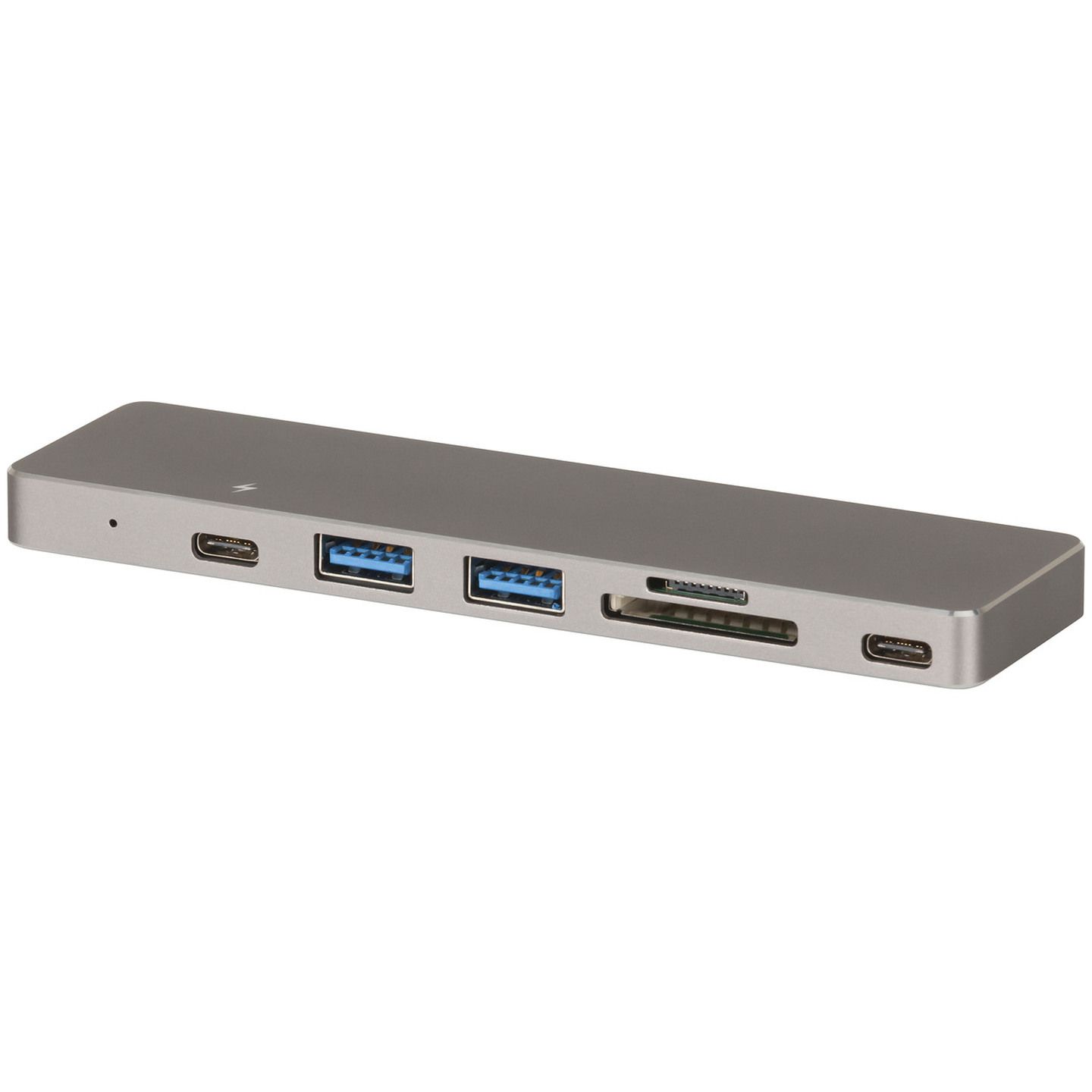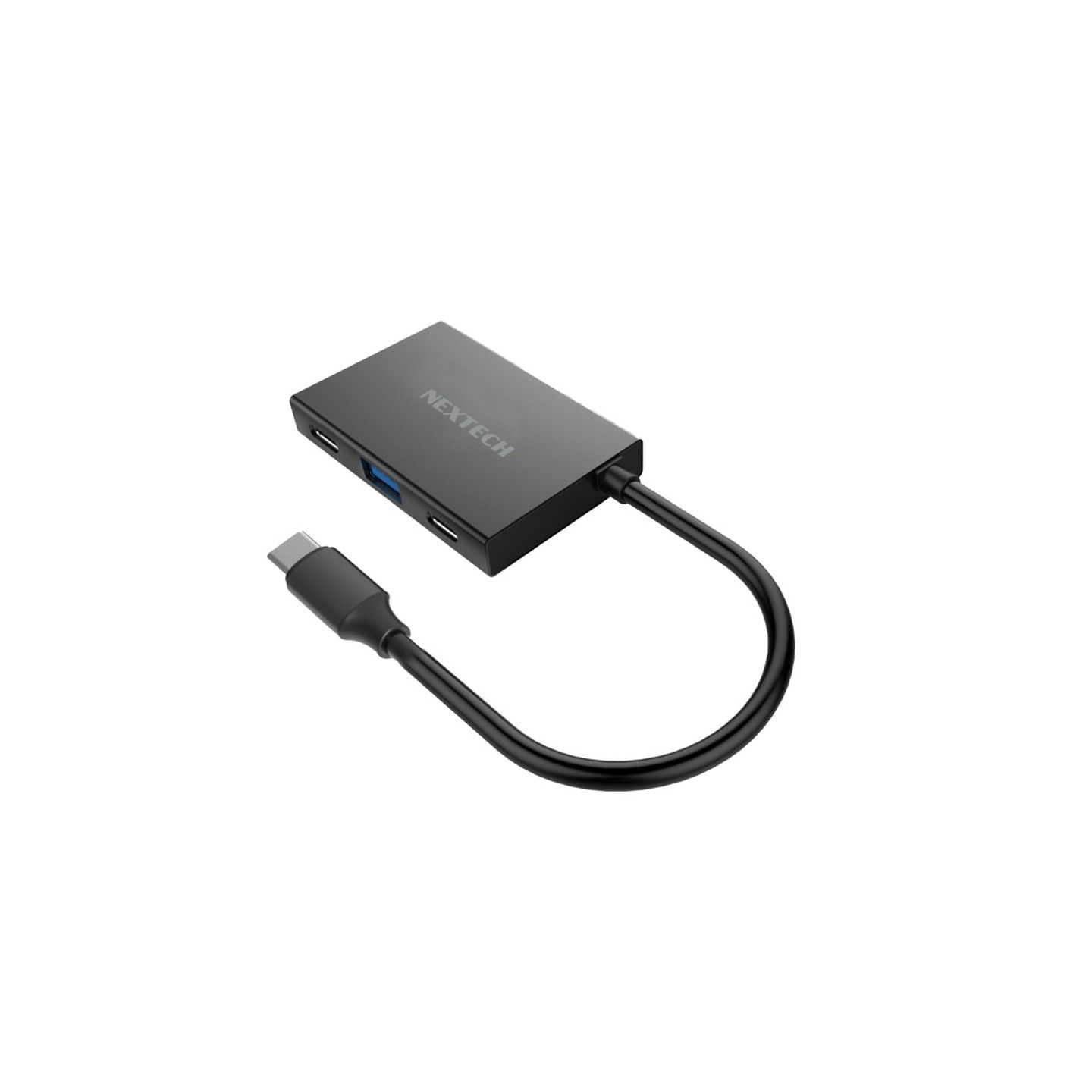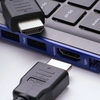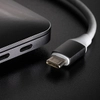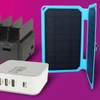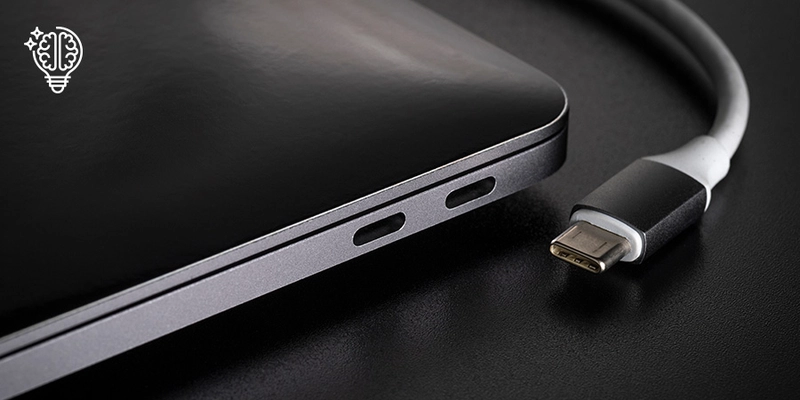
Confused about the differences between Thunderbolt and USB? Then you’ve come to the right place in the post below you’ll find all the information you need concerning the similarities and differences of the USB-C and Thunderbolt, as well as the best situations in which to use each one. Just keep reading to find out more.
What is USB-C?
Before we can compare and contrast the USB-C to the Thunderbolt we need to have a clear idea of what each type of port and connectors are.
For instance, the USB-C or Universal Serial Bus type C as they are also known, are ports and connectors used with digital devices like PCs, laptops, tablets, mobile phones, and monitors that allow both charging and transfer of data.
The USB-C is the latest offering and follows on from the USB-B. The B and C-type USBs look quite similar in terms of the connectors, but the C-type is more oval and a little thicker. The shape of the USB-C changed to allow it to be used either way up, which makes it much more user-friendly, as all you need to do is plug and go. Similarly, on a USB-C cable, both ends host the same connectors. This means you won't need to fuss about finding the right end to fit into your computer or plug and the right end for your device.
Created by the USB Implementers Forum (USB-IF), the USB-C is popular with all the big names in tech from Apple, to Samsung, and Microsoft to Dell. Indeed, you’ll find USB-C ports on all sorts of devices from tablets, smartphones, hair dryers, and laptops.
It's not surprising to see why the USB-C has become so popular either as it offers almost 100 watts of power, making charging laptops, tablets and mobile phone batteries as sinch. You an even get USB plugs, and USB-C also provides a data transmitting speed of up to 20Gps, meaning the transfer of information is both fast and smooth.
What is Thunderbolt?
While many people think that a Thunderbolt is a completely separate type of port and connector set-up, it's actually a type of USB-C. Indeed, to look at them, the 3 and 4 versions are almost identical. However, it is worth noting that ports capable of thunderbolt compatibility often sometimes display a lightning bolt to the side. You can use thunderbolt cables and ports interchangeably with USB-C ones.
Thunderbolts can do whatever USB-Cs can do, the main difference is in the speed at which they can do it. Indeed, a Thunderbolt is much more powerful for charging and data transfer than a standard USB-C. Indeed, Thunderbolts offers a dual data channel with a combined power of 20 Gbps, compared to a USB-C’s single data channel which offers a maximum of 20 Gbps. The great thing about this is that Thunderbolts can facilitate fast and effective data transfers to and from high-resolution devices like 60 Hz, and 4K external monitors. Indeed, the Thunderbolt 4 can support transmitting video with a single 8K display, or two 4K displays!
Such benefits mean that plenty of top tech companies have embraced the use of Thunderbolt technology. Apple in particular uses it for their later iPad Pros and Macs. Although you will also see them in higher-end Windows products as well.
Another great thing about the Thunderbolt is that because it's a type of USB-C it's compatible with standard USB-C ports and connectors as well. Although it's worth noting that if you use a thunderbolt in a USB-C port, or a USB-C in a Thunderbird port the performance will be limited to USB-C parameters.
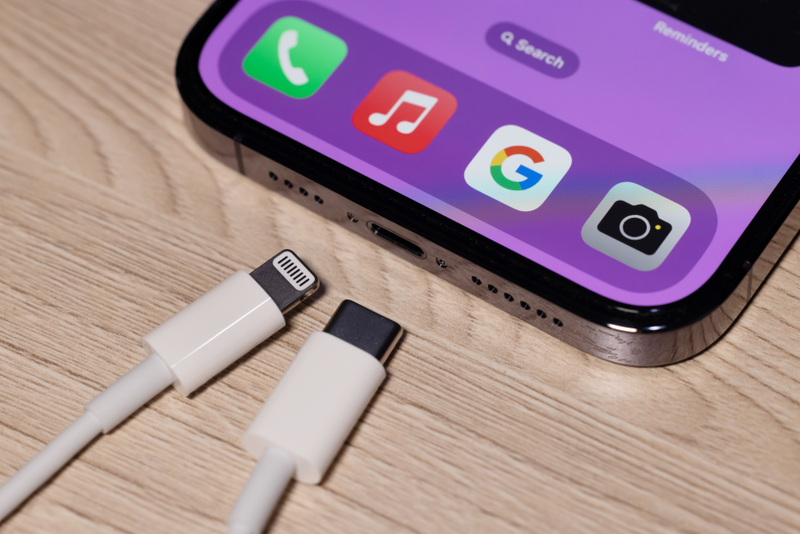
USB-C vs Thunderbolt
Below you’ll find a quick visual guide to the main differences between Thunderbolts and USB-C
Thunderbolt | USB-C |
The Thunderbolt port and connector represent the latest in current technology | USB-C ports are the current industry standard and used most commonly across devices |
Thunderbolts offers charging and standard data transfers like USB-C. Thunderbolts also offer faster data transfer and improved transfer of as well as high-resolution displays, images, and video. | USB-C offers both charging and standard data transfers |
Thunderbolts have no up or down orientation, and they have the same connector on both ends for ease of use. | USB-Cs have no up or down orientation for ease of use |
The Thunderbolt contains two separate data channels for faster transfers | USB-C has only one data channel |
A single Thunderbolt port can support more than one device (Daisy-chaining) | One port is needed per device. Daisy chaining is not possible andthe use of multiples requires a USB hub. |
What are USB-C and Thunderbolt used for?
Are you wondering when the best time to use a USB-C or Thunderbolt is? Well, both USB-Cs and Thunderbolts can be used for transferring data, charging devices, and connecting computers to peripheral devices such as monitors or external hard drives.
When to use a Thunderbolt
However, because Thunderbolts are faster and support the transfer of high-resolution images and video, they tend to be utilized by those working in professions that require high-speed data transfers to and from external hard drives such as graphic designers, DJs, filmmakers, animators and architects to name but a few. Indeed, slower data transfer could at best significantly hinder such professionals and at worst cost them a great deal of time.
Competitive gamers also tend to use Thunderbolt where possible as every millisecond counts when they are executing those special moves in a tournament.
Similarly, professions that utilise the daisy-chaining of multiple 4K monitors for multitasking and productivity such as stock broking, communications, accounting and engineering can benefit from using Thunderbolt tech.
When to use a USB-C
Since USB-C is the standard type of cable in the tech world many people choose to use them over thunderbolts because they know that they will always be viable and supported. Usually, USB-Cs are used for tasks such as connecting two devices or using peripheral devices with a machine such as a laptop, or PC.
USB-C is still the most used connector for charging smartphones and other portable devices such as tablets.
Which port is better? Type C USB vs Thunderbolt?
If you are wondering whether the USB-C port or the Thunderbolt port is better, then you are not alone. Many people ponder this question, especially when it comes time to buy a new device and the debate is further clouded by the fact that Thunderbolts and USB-Cs are interchangeable to some degree. Indeed, the answer is not as clear-cut as you might think.
For example, thunderbolt offers more cutting-edge technology than a standard USB-C but also comes at an increased cost. However, if you are using devices that only support USB-C, then purchasing a Thunderbolt cable will not only be redundant but a waste of money. Indeed the key to deciding whether a Thunderbolt or a USB-C is better completely depends on your intended use for it.
Remember that the worth of the Thunderbolt comes from its ability to quickly transfer data. This means that if you are doing tasks that require a superfast transfer of data then the cost of the Thunderbolt is justified. Similarly, because a Thunderbolt can support the fast transfer of high-resolution images and video, those working with images and video can greatly improve their productivity and cut their downtime by choosing to use a Thunderbolt cable in compatible Thunderbolt ports.
What this means is unless you need the fast transfer of data including images and video, a cheaper and more widely used USB-C may be sufficient for your needs, and save you money as well.
What is the Difference Between Ports?
Explain how to identify the difference in ports. As they look similar, it is best to check product specifications.
Lastly, it's important to know how to tell the difference between Thunderbolt ports and cables, and USB-C ports and cables. The problem here is that because Thunderbolts are backwards compatible with USB-C, they in essence look the same.
Yes, that’s right, while they are two distinctly different types of cables, with differing capabilities, and uses, in most cases you’d never know that from looking at them. Indeed, most people will need to check the specifications of the device or cable to know whether you are dealing with a USB-C or a Thunderbolt!
The only exception to this rule is when Thunderbolt devices are made with tiny lightning bolts displayed on them, usually to the side of the port. Is this standard in the industry? No unfortunately not as both types are designed for better user experience is a major oversight.
USB-C ports and cables are no better either and also do not state whether they support only USB-C functions or Thunderbolt ones, so it can be very confusing to anyone looking to use them. Indeed, even the most tech-savvy and top-of-the-line devices like Apple's MacBook Pro do not label its Thunderbolt ports, and the Microsoft Surface Laptop's USB-C port is similarly unlabelled demonstrating that sadly, there is a huge lack of consistency in this area.


